Fabio Valerio Massoli
Fundamental bounds on efficiency-confidence trade-off for transductive conformal prediction
Sep 04, 2025Abstract:Transductive conformal prediction addresses the simultaneous prediction for multiple data points. Given a desired confidence level, the objective is to construct a prediction set that includes the true outcomes with the prescribed confidence. We demonstrate a fundamental trade-off between confidence and efficiency in transductive methods, where efficiency is measured by the size of the prediction sets. Specifically, we derive a strict finite-sample bound showing that any non-trivial confidence level leads to exponential growth in prediction set size for data with inherent uncertainty. The exponent scales linearly with the number of samples and is proportional to the conditional entropy of the data. Additionally, the bound includes a second-order term, dispersion, defined as the variance of the log conditional probability distribution. We show that this bound is achievable in an idealized setting. Finally, we examine a special case of transductive prediction where all test data points share the same label. We show that this scenario reduces to the hypothesis testing problem with empirically observed statistics and provide an asymptotically optimal confidence predictor, along with an analysis of the error exponent.
Reinforcement Learning of Adaptive Acquisition Policies for Inverse Problems
Jul 10, 2024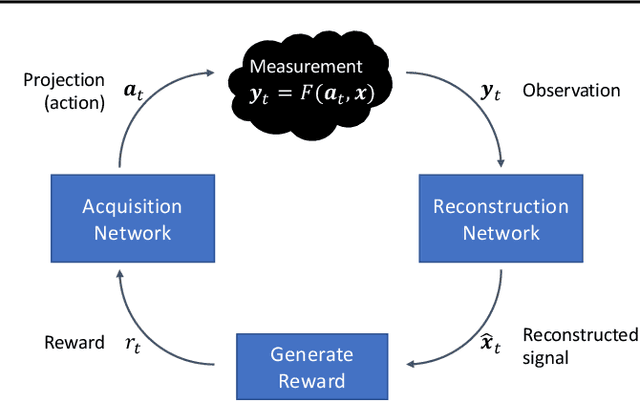

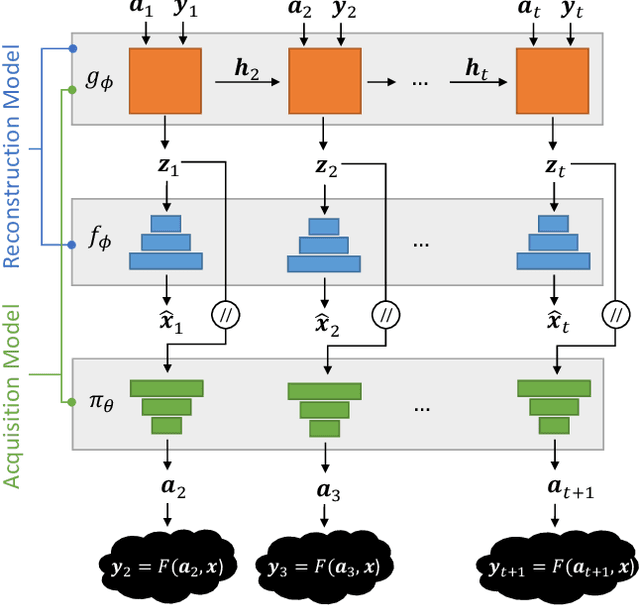

Abstract:A promising way to mitigate the expensive process of obtaining a high-dimensional signal is to acquire a limited number of low-dimensional measurements and solve an under-determined inverse problem by utilizing the structural prior about the signal. In this paper, we focus on adaptive acquisition schemes to save further the number of measurements. To this end, we propose a reinforcement learning-based approach that sequentially collects measurements to better recover the underlying signal by acquiring fewer measurements. Our approach applies to general inverse problems with continuous action spaces and jointly learns the recovery algorithm. Using insights obtained from theoretical analysis, we also provide a probabilistic design for our methods using variational formulation. We evaluate our approach on multiple datasets and with two measurement spaces (Gaussian, Radon). Our results confirm the benefits of adaptive strategies in low-acquisition horizon settings.
Variational Learning ISTA
Jul 09, 2024Abstract:Compressed sensing combines the power of convex optimization techniques with a sparsity-inducing prior on the signal space to solve an underdetermined system of equations. For many problems, the sparsifying dictionary is not directly given, nor its existence can be assumed. Besides, the sensing matrix can change across different scenarios. Addressing these issues requires solving a sparse representation learning problem, namely dictionary learning, taking into account the epistemic uncertainty of the learned dictionaries and, finally, jointly learning sparse representations and reconstructions under varying sensing matrix conditions. We address both concerns by proposing a variant of the LISTA architecture. First, we introduce Augmented Dictionary Learning ISTA (A-DLISTA), which incorporates an augmentation module to adapt parameters to the current measurement setup. Then, we propose to learn a distribution over dictionaries via a variational approach, dubbed Variational Learning ISTA (VLISTA). VLISTA exploits A-DLISTA as the likelihood model and approximates a posterior distribution over the dictionaries as part of an unfolded LISTA-based recovery algorithm. As a result, VLISTA provides a probabilistic way to jointly learn the dictionary distribution and the reconstruction algorithm with varying sensing matrices. We provide theoretical and experimental support for our architecture and show that our model learns calibrated uncertainties.
Simulating, Fast and Slow: Learning Policies for Black-Box Optimization
Jun 06, 2024
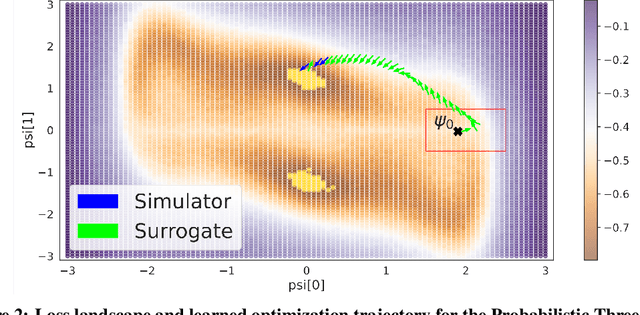
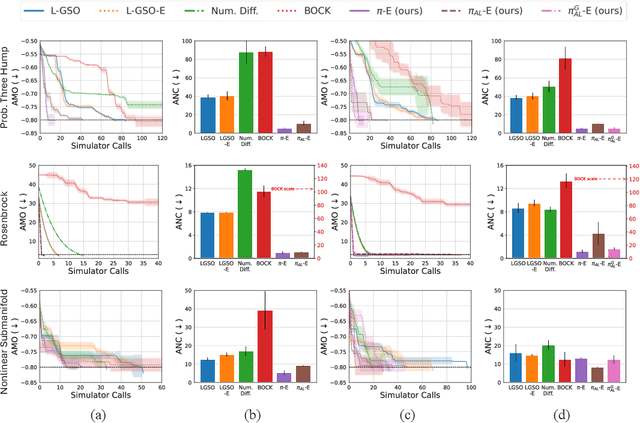
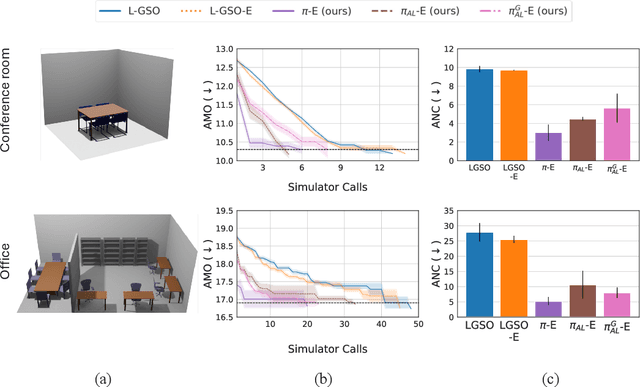
Abstract:In recent years, solving optimization problems involving black-box simulators has become a point of focus for the machine learning community due to their ubiquity in science and engineering. The simulators describe a forward process $f_{\mathrm{sim}}: (\psi, x) \rightarrow y$ from simulation parameters $\psi$ and input data $x$ to observations $y$, and the goal of the optimization problem is to find parameters $\psi$ that minimize a desired loss function. Sophisticated optimization algorithms typically require gradient information regarding the forward process, $f_{\mathrm{sim}}$, with respect to the parameters $\psi$. However, obtaining gradients from black-box simulators can often be prohibitively expensive or, in some cases, impossible. Furthermore, in many applications, practitioners aim to solve a set of related problems. Thus, starting the optimization ``ab initio", i.e. from scratch, each time might be inefficient if the forward model is expensive to evaluate. To address those challenges, this paper introduces a novel method for solving classes of similar black-box optimization problems by learning an active learning policy that guides a differentiable surrogate's training and uses the surrogate's gradients to optimize the simulation parameters with gradient descent. After training the policy, downstream optimization of problems involving black-box simulators requires up to $\sim$90\% fewer expensive simulator calls compared to baselines such as local surrogate-based approaches, numerical optimization, and Bayesian methods.
Vision-Assisted Digital Twin Creation for mmWave Beam Management
Jan 31, 2024



Abstract:In the context of communication networks, digital twin technology provides a means to replicate the radio frequency (RF) propagation environment as well as the system behaviour, allowing for a way to optimize the performance of a deployed system based on simulations. One of the key challenges in the application of Digital Twin technology to mmWave systems is the prevalent channel simulators' stringent requirements on the accuracy of the 3D Digital Twin, reducing the feasibility of the technology in real applications. We propose a practical Digital Twin creation pipeline and a channel simulator, that relies only on a single mounted camera and position information. We demonstrate the performance benefits compared to methods that do not explicitly model the 3D environment, on downstream sub-tasks in beam acquisition, using the real-world dataset of the DeepSense6G challenge
Beyond Codebook-Based Analog Beamforming at mmWave: Compressed Sensing and Machine Learning Methods
Nov 03, 2022



Abstract:Analog beamforming is the predominant approach for millimeter wave (mmWave) communication given its favorable characteristics for limited-resource devices. In this work, we aim at reducing the spectral efficiency gap between analog and digital beamforming methods. We propose a method for refined beam selection based on the estimated raw channel. The channel estimation, an underdetermined problem, is solved using compressed sensing (CS) methods leveraging angular domain sparsity of the channel. To reduce the complexity of CS methods, we propose dictionary learning iterative soft-thresholding algorithm, which jointly learns the sparsifying dictionary and signal reconstruction. We evaluate the proposed method on a realistic mmWave setup and show considerable performance improvement with respect to code-book based analog beamforming approaches.
Equivariant Priors for Compressed Sensing with Unknown Orientation
Jun 28, 2022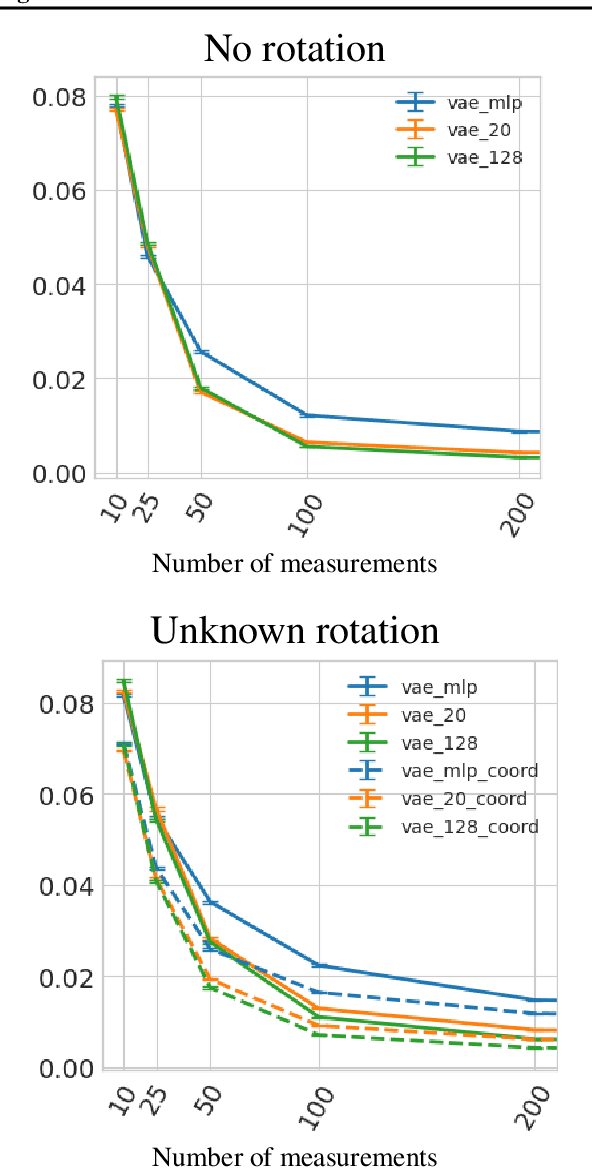
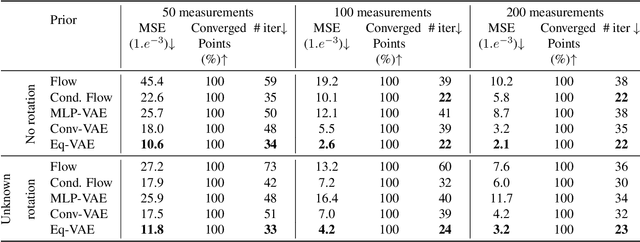
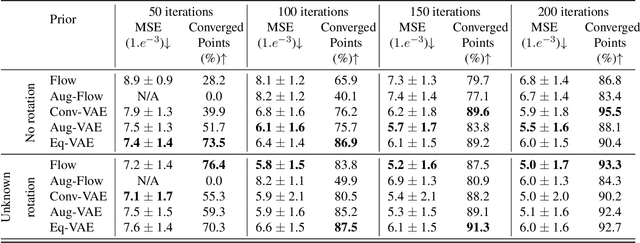

Abstract:In compressed sensing, the goal is to reconstruct the signal from an underdetermined system of linear measurements. Thus, prior knowledge about the signal of interest and its structure is required. Additionally, in many scenarios, the signal has an unknown orientation prior to measurements. To address such recovery problems, we propose using equivariant generative models as a prior, which encapsulate orientation information in their latent space. Thereby, we show that signals with unknown orientations can be recovered with iterative gradient descent on the latent space of these models and provide additional theoretical recovery guarantees. We construct an equivariant variational autoencoder and use the decoder as generative prior for compressed sensing. We discuss additional potential gains of the proposed approach in terms of convergence and latency.
A Leap among Entanglement and Neural Networks: A Quantum Survey
Jul 06, 2021



Abstract:In recent years, Quantum Computing witnessed massive improvements both in terms of resources availability and algorithms development. The ability to harness quantum phenomena to solve computational problems is a long-standing dream that has drawn the scientific community's interest since the late '80s. In such a context, we pose our contribution. First, we introduce basic concepts related to quantum computations, and then we explain the core functionalities of technologies that implement the Gate Model and Adiabatic Quantum Computing paradigms. Finally, we gather, compare and analyze the current state-of-the-art concerning Quantum Perceptrons and Quantum Neural Networks implementations.
MAFER: a Multi-resolution Approach to Facial Expression Recognition
May 06, 2021



Abstract:Emotions play a central role in the social life of every human being, and their study, which represents a multidisciplinary subject, embraces a great variety of research fields. Especially concerning the latter, the analysis of facial expressions represents a very active research area due to its relevance to human-computer interaction applications. In such a context, Facial Expression Recognition (FER) is the task of recognizing expressions on human faces. Typically, face images are acquired by cameras that have, by nature, different characteristics, such as the output resolution. It has been already shown in the literature that Deep Learning models applied to face recognition experience a degradation in their performance when tested against multi-resolution scenarios. Since the FER task involves analyzing face images that can be acquired with heterogeneous sources, thus involving images with different quality, it is plausible to expect that resolution plays an important role in such a case too. Stemming from such a hypothesis, we prove the benefits of multi-resolution training for models tasked with recognizing facial expressions. Hence, we propose a two-step learning procedure, named MAFER, to train DCNNs to empower them to generate robust predictions across a wide range of resolutions. A relevant feature of MAFER is that it is task-agnostic, i.e., it can be used complementarily to other objective-related techniques. To assess the effectiveness of the proposed approach, we performed an extensive experimental campaign on publicly available datasets: \fer{}, \raf{}, and \oulu{}. For a multi-resolution context, we observe that with our approach, learning models improve upon the current SotA while reporting comparable results in fix-resolution contexts. Finally, we analyze the performance of our models and observe the higher discrimination power of deep features generated from them.
A Multi-resolution Approach to Expression Recognition in the Wild
Mar 09, 2021
Abstract:Facial expressions play a fundamental role in human communication. Indeed, they typically reveal the real emotional status of people beyond the spoken language. Moreover, the comprehension of human affect based on visual patterns is a key ingredient for any human-machine interaction system and, for such reasons, the task of Facial Expression Recognition (FER) draws both scientific and industrial interest. In the recent years, Deep Learning techniques reached very high performance on FER by exploiting different architectures and learning paradigms. In such a context, we propose a multi-resolution approach to solve the FER task. We ground our intuition on the observation that often faces images are acquired at different resolutions. Thus, directly considering such property while training a model can help achieve higher performance on recognizing facial expressions. To our aim, we use a ResNet-like architecture, equipped with Squeeze-and-Excitation blocks, trained on the Affect-in-the-Wild 2 dataset. Not being available a test set, we conduct tests and models selection by employing the validation set only on which we achieve more than 90\% accuracy on classifying the seven expressions that the dataset comprises.
 Add to Chrome
Add to Chrome Add to Firefox
Add to Firefox Add to Edge
Add to Edge